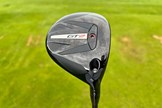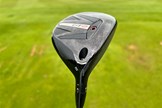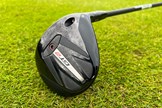Built for versatility at every level: the Titleist GT2 Fairway Wood Review
Last updated:
-
At a glance
- TG Rating
- Owner Rating
-
Pros
- Extremely versatile in different conditions
- Clean looks focus you on the ball
- Confidence-inspiring forgiveness
-
Cons
- The higher end of the price market
What we say...
Titleist say the new GT fairway woods have taken inspiration from Tour feedback during development but can they still work for everyday golfers like us?
These days, it seems like part and parcel for companies to quote tour-level input in their latest clubs, whether fairway woods, drivers, or otherwise. On paper it makes sense; if you have access to the best players in the world, as an equipment manufacturer, why wouldn’t you use them to your best advantage?
“The first step in our process when we turn to designing the next generation of a product line is Tour feedback,” said Tom Bennett, Titleist Clubs’ Principal Product Manager. “We get a lot of input from JJ [Van Wezenbeeck, Director of Player Promotions] from his work with Tour players. With GT fairways, our primary direction was to elevate the flight, but not the spin.”
The statement from Tom Bennett is an interesting one. He spoke about the need to elevate the flight without increasing spin from their new fairway woods, but normally these two characteristics come hand in hand. So how have Titleist been able to separate the two to meet the demands of both the highest echelons of golfers on the planet as well as those that take inspiration from these athletes as we take to the course for our Sunday morning adventures?
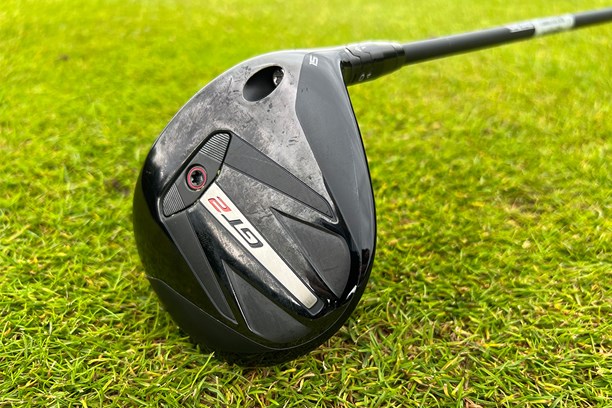
Form-fitting
For Titleist, this required some out-the-box thinking. They knew what the end goal was and they knew what the stipulations were. Titleist players wanted to raise ball flight, but they also didn’t want to see the shape of the woods or, even more importantly, the sound and feedback change.
The company has been committed to metal over the last few generations, largely because of the reluctance to change what defines a Titleist product: the feel. What Titleist needed was a material that could provide the weight savings required while still offering the acoustics of metal.
It turns out that Titleist R&D have had something in the works just for that.
The workhorse of Titleist GT Fairway Woods
Best for Versatility
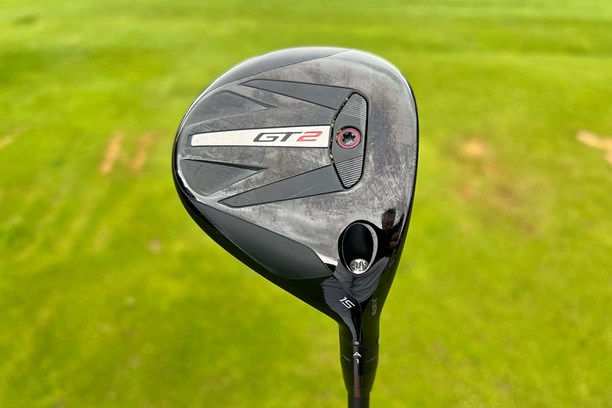

Pros
- Extremely versatile in different conditions
- Clean looks focus you on the ball
- Confidence-inspiring forgiveness
Cons
- The higher end of the price market
| Lofts: | 13.5º / 15º / 16.5º / 18º / 21º (RH/LH) |
| Shafts: | Project X Denali Red, Mitsubishi Tensei 1K Blue, Project X HZRDUS Black 5th Gen, Mitsubishi Tensei 1K Black + Premium Upcharge Graphite Design Tour AD-VF, Tour AD-DI, and Tour AD-UB |
| Grip: | Titleist Universal 360 Grip |
| Weight Options: | 5g / 7g / 9g (Standard) / 11g / 13g / 15g |
- Proprietary Matrix Polymer material
- Thermoform Process Crown
- Forged L-Cup Face Design
- Tour-Inspired Shaping
It’s called Proprietary Matrix Polymer. Or PMP for short. PMP is, to keep things simple, an ultra-lightweight carbon construction that the engineers in Carlsbad have used to build a new crown for the woods that is five times lighter than the steel normally used.
Combine this with new seamless Thermoform Technology, and you can now push CG (center of gravity) lower down and closer to the face to increase the launch of the new GT2 fairway wood while keeping spin in the same window as the TSR2.
So that’s one of our two boxes ticked, but what about the sound? That’s just another reason Titleist are so keen to talk about PMP. What makes this different from any other carbon fiber is immediately noticeable at impact.
In contrast to the normal feedback you get from carbon fiber (typically a duller, flat sound), this new material creates a noise indecipherable from an entirely metal head, helping to preserve the classic sound of steel that you associate with a distinctively Titleist product.
L is for launch
Crossover of design is not new for the Titleist. Engineers who designed the latest iron lines worked in tandem with the designers of Vokey wedges to create a new sole that is better for turf interaction. With that combination of minds working out so well, it was inevitable that we would see further collaboration between departments.
Continuing from the ideas in the 2023 iron launch, where the face of the T-series was enhanced with an L-face design, Titleist has introduced a new Forged L-Cup onto the GT fairway woods to protect against ball speed losses.
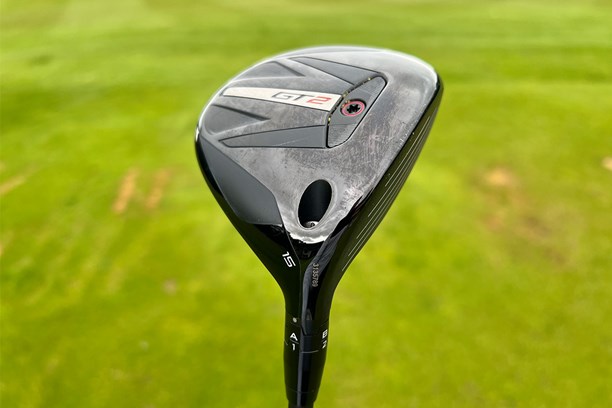
Made from 465 stainless steel, one of the strongest steels in existence, L-Cup wraps the face around the bottom of the club. The goal of this is to improve ball speeds on low-face strikes, a common mishit for amateurs and tour players-a-like. L-Cup allows engineers to thin the face near the sole without losing any strength, allowing for higher speeds, more height, and lower spin for more distance and stopping power in your long game.
It’s certainly been noticeable for me out on the golf course. As someone who will certainly miss thin with fairway woods and long irons, having help coming into greens is essential. The GT2 3-wood I’ve been using for the last few weeks has proven to be consistent across the face, even when I hit a dreaded thin. While the retention of distance has been nice, my biggest pleasure has been the additional height. If we’re hitting fairway woods at a green we already know we’re pushing out to the maximum of what’s reachable to us. To see thinned shots come down with a few more degrees of descent has been incredibly confidence-inspiring when pulling out a wood from the fairway.
Heels and Toes
That being said, I’ve seen fewer mishits occur than with my old TSR fairway in general. During my fitting, it was obvious that something had been changed to help get the club closer to the ground at impact but from looking down at this 3-wood I was hard-pressed to point to anything in particular.
GT2 retains the same face depth as before, a popular look for golfers who hit more down on the ball (or take more divots) with their longer clubs, but Titleist have used the two years since TSR launched to refine more subtle elements in the club head.
R&D has worked to flatten the sole curvature of the new metalwoods, allowing both GT2 and GT3 to sit more flush with the ground. This visually makes the woods look like they sit lower than the ball, inviting a feeling of confidence that I can find the middle of the face without making an obvious difference at address.
A secondary function of this change is that, because the toe and heel are closer to the ground, strikes in those locations are higher up in the face helping to improve forgiveness when we suffer less than perfect contact.

On the course
With fairway woods, I’ve always been between shapes. I prefer the look of deeper faces for how they frame the ball and, mentally, they encourage me to feel like I can get more on top of the ball during a swing. Shallower, flatter woods have worked out more for me in general but I struggle to trust anything where the ball looks taller than the club.
GT2 seems to have found the middle ground between my needs and my desires. I love the taller look (although Titleist have said it’s shallower than TSR2 was) that reminds me of the TSR3 that I played but with the added benefits in design, it plays like the flatter heads I tend to hit better.
From a looks perspective, I couldn’t be happier. I switched into an old SIM Max Fairway a few months ago in search of more help than I was getting from TSR3. The performance was better but I still wasn’t in love with the look.
GT2 is allowing me to hit the shots that I want to out on the course and giving me the comfort over the ball that I couldn’t match in with playability before.
This is unapologetically a Titleist product yet they’ve made changes with GT2 that are clearly going to be a basis for the entire metalwoods category for years to come, with a genuinely impressive improvement over clubs that many said couldn’t be beaten.
With that being said, holding the GT2 in my hands, I’m more than content to stay in the here and now and make the most of my time with a fairway wood that I can’t see leaving my bag, either this year or next.
About the author

Lewis Daff
Lewis Daff joined the Today’s Golfer digital team in 2024, having spent more than a decade in both big box golf retail and independent stores, working as a club fitter and builder.
Experienced with every level of golfer, from beginner to professional, he has achieved Master Fitter and Builder status with most major manufacturers, including Mizuno, Taylormade, and Callaway, helping him to cement both a wide and deep knowledge base. Lewis specializes in Clubs, Shafts, Training Aids, Launch Monitors and Grips.
In Lewis’ bag is Titleist GT3 Driver (9º) with Fujikura Ventus Black, Titleist GT2 Fairway Wood (15º), Wilson Staff D9 Forged 3-iron, Srixon ZX7 MKii Irons (4-PW), Titleist SM9 Wedges (52º, 60º), Toulon San Diego Putter, and Callaway Chrome Tour Ball.
Talk to Lewis about why steel shafts are now dead and graphite is the only way forward or any other equipment you’d like to debate via his email.
Product Information
Titleist GT2 Fairway Woods
RRP: $399.00 / £349.00 + $599.00 / £519.00 (Premium)
Lofts: 13.5º / 15º / 16.5° / 18° / 21° (RH/LH)
Head Size: 200cc / 170cc / 170cc / 150cc /145 cc
Lie: 56.5° / 56.5º / 57º / 57.5º / 58º
Standard Shaft Length: 43” / 43" / 43" / 42" /41.5"
Stock Shaft Options:Project X Denali Red / Mitsubishi Tensei 1K Blue / Project X HZRDUS Black 5th Gen / Mitsubishi Tensei 1K Black
Premium Upcharge Shafts: Graphite Design Tour AD-VF / Tour AD-DI / Tour AD-UB
Stock Grip: Titleist Universal 360 Grip



